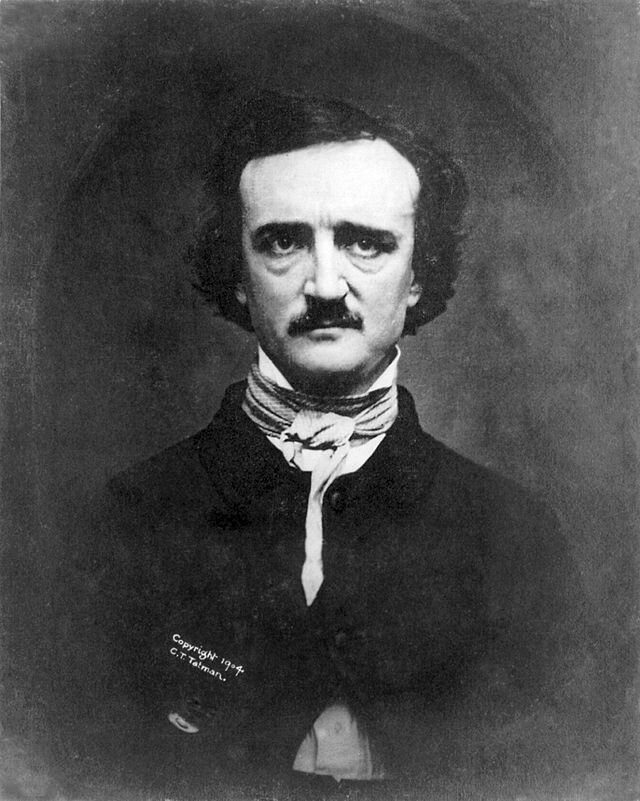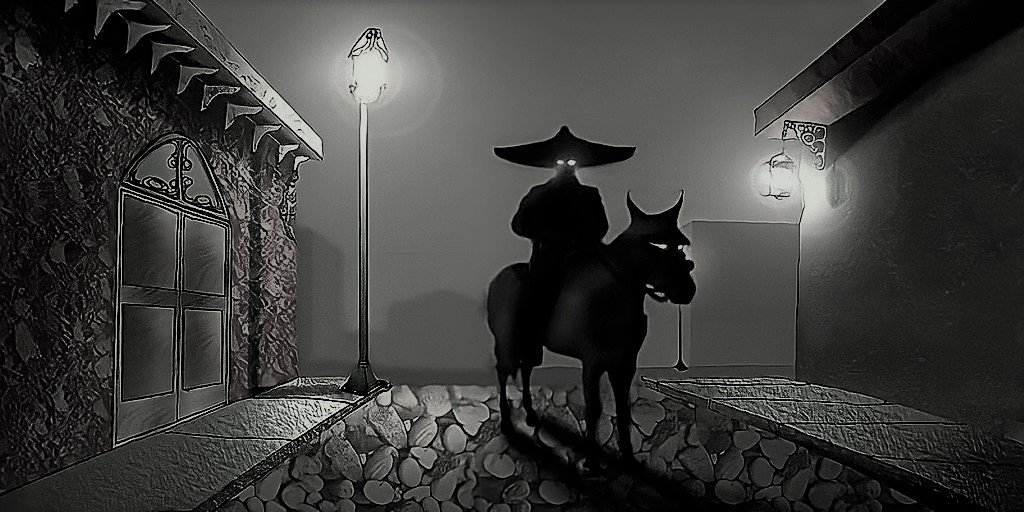Mysterious Death of Edgar Allan Poe
Today we’re looking at a man known for instilling terror and fear into many generations, his short stories and poems reflecting his life in sadness and intrigue, and as if his writings were not enough to cement his legacy, his death is marred by a mystery that is still unsolved today.
First, we’ll look at his tragic life, then at the mysterious events and circumstances of his death, and finally look at theories as to what may have happened to cut Edgar Allan Poe’s life short.
Is it possible his death was from a prior medical condition or was he left beaten to death by a group as part of a political plot for votes?
This is the life and mysterious death of Edgar Allan Poe.
PART 1 - The Life
“From childhood’s hour I have not been. As others were, I have not seen. As others saw, I could not awaken. My heart to joy at the same tone. And all I loved, I loved alone.”
Edgar Allan Poe
Edgar Poe was born on January 19th, 1809 in Boston Massachusetts to actors Elizabeth Arnold Poe and David Poe. It wasn’t long before Poe would face his first familial trauma as his father abandoned the family when he was only a year old.
This left Elizabeth Poe alone to care for her three children as she attempted to make ends meet by traveling and acting. The very next year Elizabeth Poe died from tuberculosis surrounded by her children.
Poe was then separated from his brother and younger sister and taken in by the wealthy tobacco merchant John Allan and his wife Francis Valentine Allan. Although not formally adopted, the Allan’s changed Edgar Poe’s name to Edgar Allan Poe.
The business-minded Allan would continuously bump heads with Edgar, often attempting to make him a businessman while Poe dreamt, even from an early age, of being a writer and a poet.
Meeting Sarah Elmira Royster
In 1826 at the age of 17 Poe left for the University of Virginia but prior to leaving he would become engaged to Sarah Elmira Royster. Although Poe wrote Sarah various letters during his time at the university, her father disapproved of the engagement. He destroyed every letter Poe sent to Sarah before she could see them.
Poe’s ill fortunes would continue as John Allan chose to send Poe to university with only a third of what was needed to pay for the classes. Poe would have to turn to gambling in order to make money, this eventually led him into much greater debt with staunch refusal from Allan to send more money or cover the debts. It’s said Poe started developing or at the least displaying more concrete signs of depression with manic episodes.
Destitute and cold Poe resorted to burning his only bit of furniture in order to keep warm in the cold winter months of Virginia. Before the year ended, Poe dropped out unable to pay the school or his debts. Returning home he found his fiancé Sarah had become engaged to another man.
Joining the Army
Heartbroken and angry, Poe’s continued arguments with John Allan led him to enlist in the United States Army.
Poe’s life started to look up as he published his first book Tamerlane and other Poems and in two years reached the rank of Sergeant Major for Artillery. Yet good fortunes would never last long in the life of Edgar Allan Poe, on February 28th, 1829, Poe’s foster mother Frances Virginia Allan would die.
Given an appointment to the Military Academy in New York but unwilling to stay with John Allan, Poe decided to move to Baltimore temporarily with his aunt Maria Clemm, her daughter Virginia Clemm, and reunite with his brother Henry.
After purposely being court-martialed to be thrown out of the Academy, Poe would return to Maria Clemm and the family in March of 1831. On August 1st, 1831, Poe’s brother Henry would die partly due to alcoholism.
Becoming the Writer
This event triggered Poe to become more serious in the pursuit of his dreams and began to sell short stories to magazines, eventually acquiring the job as an editor for the Southern Literary Messenger in 1835.
In 1836 when Poe was 27 he would marry his 13-year-old cousin Virginia. The following ten years would be a prosperous decade for Poe’s writing as he would go on to edit various publications and write many of his most famous tales. “The Tell-Tale Heart”, “The Fall of the House of Usher”, “The Murder in the Rue Morgue”, and in 1845, “The Raven”.
With the publication of “The Raven”, Edgar Allan Poe became a household name and gained him the national fame he desired.
Despite this, Poe still struggled financially as he was unable to sell most of his works for a substantial amount of money. Arguably his best work “The Raven” was sold for $9 which is about $305 in today’s money. Poe also struggled during this time with several bouts of depression and alcoholism as his wife Virginia Poe had become ill with tuberculosis.
Losing Virginia
On January 30th of 1847, Virginia Poe would succumb to the disease.
Many have said her death led Poe into a tailspin of self-destruction. His depression and alcoholism worsened causing Poe to act erratically at times.
In 1848 Poe would even attempt suicide, writing “I went to bed and wept through a long, long hideous night of despair.”
In 1849 Poe reunited with his first fiancé, the now-widowed Sarah Elmira Royster. The two resumed a relationship and had become engaged.
But, just a few months later, Edgar Allan Poe was dead.
PART 2 - The Death
“I have made no money. I am as poor now as ever I was in my life - except in hope, which is by no means bankable.”
Edgar Allan Poe
During the summer of 1849, Edgar Allan Poe was seemingly overcoming his demons. Some accounts say he had experienced only 2 relapses of his depressive episodes and was preparing to head to Philadelphia for an editing job.
For unknown reasons, Poe stopped in Baltimore first. For the next 5 days, there is no account of his whereabouts.
On October 3rd Poe was found delirious and at times unresponsive in the streets of Baltimore outside of a polling place being used for an election. The curious state he was in created more questions when it was realized he wasn’t wearing his own clothes and when conscious would repeatedly yell out the name, “Reynolds”
“Lord, help my poor soul.”
Poe was sent to Washington College Hospital where the attending physician, Doctor John Moran, oversaw him during his last days on Earth. Watching him as he died, Doctor Moran stated Edgar Allan Poe’s final words were “Lord, help my poor soul.”
Edgar Allan Poe died on October 7th, 1849, alone, secluded from the world in a hospital’s prison-like room with barred windows often reserved for drunks.
Sarah Royster would not learn of his death for another month from the newspapers. The same newspapers would list his death as cerebral inflammation, a term used at the time instead of alcoholism. Yet Poe in the last years of his life had joined the temperance movement, a group against the consumption of alcohol.
And other questions also remained, why was Poe in Baltimore?
Who or what was Reynolds?
Why was Poe dressed in clothes that did not fit or even belong to him?
What or who actually killed Edgar Allan Poe?
PART 3 - The Theories
“The danger, is past, And the lingering illness Is over at last—And the fever called "Living" Is conquered at last.”
Edgar Allan Poe
The first theory we will look at was the most commonly accepted at the time, alcoholism. The reason it was accepted at the time was due to two men Dr. Joseph Snodgrass, a friend of Poe, and Rufus Griswold a literary rival of Poe.
When Dr. Joseph Snodgrass arrived at the scene where Poe was found, he immediately assumed Poe was drunk. Snodgrass was a stern supporter of the temperance movement and used Poe as an example to popularize the movement.
Yet Doctor John Moran would later state that Poe, “had not the slightest odor of liquor upon his breath or person.”
Despite Moran’s contradiction, the rumors would still spread, helped by Rufus Griswold who penned Poe’s obituary and the first biography on Poe, both of which painted him as a depraved drunk.
While Poe’s friends denounced the claims, the biography was still widely accepted at the time and for many years after, negatively skewing the views many had on Poe.
Cooping
The second theory we’ll look at is the possibility of Edgar Allan Poe being a victim of cooping.
In the mid-1800s cooping was a form of voter fraud wherein backers of a candidate would kidnap and force strangers to vote for their candidates multiple times under threats of violence.
If we remember Poe was not only found outside of a polling place being used for an election but also on October 3rd, which was an election day in Baltimore that year.
On top of this voters at the time were given alcohol as a reward for voting. If Poe was forced to vote multiple times, took multiple drinks, and possibly beaten multiple times this could explain how he was found.
If the cause of death listed in the papers is to be taken literally, a blow to the head is a possible cause of the cerebral inflammation he died of.
Rabies
The final theory we’ll look at is a more recent one proposed by Doctor R. Michael Benitez in 1996.
During a conference, doctors were given anonymous patients and were tasked to find the cause of deaths based on the original attending physicians’ notes.
Doctor Benitez took the admitting symptoms of lethargy and confusion then the spiraling symptoms of delirium, visual hallucinations, rapid changing pulse rate, shallow breathing, and concluded the patient was suffering from rabies. On top of the symptoms, the median survival rate for serious rabies infection is 4 days which matches Poe’s last days.
It wasn’t until after the diagnosis that Benitez was told he had diagnosed Edgar Allan Poe.
It is important to note rabies usually also presents with hydrophobia, which is the fear of water, and there are conflicting reports on whether this was the case with Poe. Benitez would also state that without a DNA test it would be impossible to conclude with one hundred percent accuracy that Poe died of rabies.
While we looked at the three more prominent theories today there are a whole host of others. It also doesn’t help that Doctor Moran, the last person to be with Poe alive, was an unreliable source and had many contradicting statements and notes over the years. On top of this, any actual medical notes and documents, including death certificates have been lost with time.
Other theories range from a brain aneurysm or tumor, heavy metal or carbon monoxide poisoning, random beatings, the flu, and even murder.
We may never know what or who killed Edgar Allan Poe and to this day we don’t know who or what Reynolds was. But we do know is Edgar Allan Poe, in gothic literature, was a talent like no other, his ability to tell a truly terrifying story on a few pages, to be able to craft characters and feelings that reached into our deep emotions may never be surpassed.
His legacy and mysterious death will forever be cemented in the literary annals of time.














